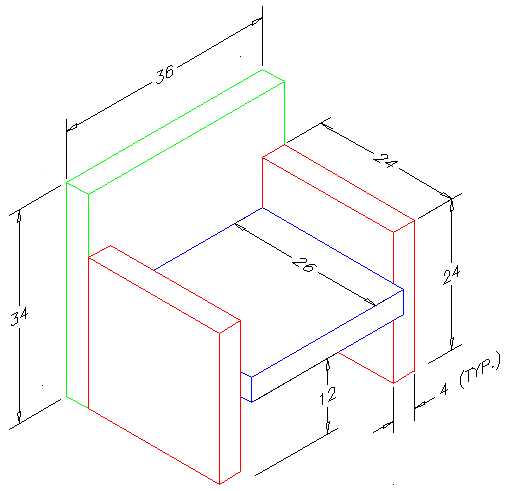Vicinity Map Creator Autocad Tutorial Free
In Texas, we have a few sites that offer the TxDOT dgn files for the centerlines of the roads, per county. I downloaded all the counties that we work in, imported them into seperate files and attached them to a master file, which I then use with the Map commands to query in the roads around our project site. The roads have object data assigned to them, so I can then Annotate them with the Map commands. Cyberlink Softdma 2 Cracked on this page. Sometimes a surveyor doesn't use a coordinate system, them I have to resort to Google Earth, but only for finding the site, which I then import the google data so that I can query around that area with the Map commands. I researched this more, there seems to be some discrepancies in the Google Permissions.

See this page first note the FAQs ' ' and ' Those answers lead me to believe, like Michael stated, Earth Pro is required to use the imagery. However, there is no mention of using Earth Pro exclusively in the Geo Permissions. Click on the Geo Permissions link in the first question, and scroll down to the 'Print' section there is a subsection titled 'Basis for contractors' or environmental consultants' reports:' I believe civil engineers would fall under this category. It seems as if the Geo Permissions state, if you site the image as described you can use them.

What do you guys think? I want to be legit, and have no problem purchasing Earth Pro, but it seems unclear whether or not we are required to do so simply for vicinity and aerial images. If you're 'Map' savvy, you can access the US 2009 Census information for free from the geocommunities GIS Data Depot (GeoComm.com) and use the display manager to label street names at varying scales. I would use this second to any DOT-based information - the DOT's usually give more information on functional class (local/county/state) versus the census lines. From the Census data, look for 'all edges' and then you want to get the data with 'roadflg=Y' so you don't get the streams/rivers/railroads, and such. Then you just have to label the road features based on the field 'FULLNAME' You can also bring in free Digital Orthophotos from the national seamless map server, 1m resolution (typically) directly into C3D.
I'd be happy to show anyone interested - toddhATctcivilDOTcom. Since no one mentioned it, don't forget that with C3D we can use WMS (Web Mapping Services). This allows you to connect to a service that has pre-made base maps and display them in your drawing. There are thousands of such servers out there. ESRI hosts several and you can connect to the National Map as well.
You will learn more about the Parcel Layout tools in later AutoCAD Civil 3D tutorial exercises. Such as land area. Sportbike Suspension Tuning Ebook Download. Exercise 1: Creating Parcels from.
Google Earth and Google Maps may have services now but I don't know if they impose restrictions on thier use. The downside is the graphics are not embedded in your drawing so if you lose connection to the service the maps will not load. Still you could use a capture utility to create an image and insert that.
Once you find a service that you like you will always have ready access to vicinity maps.
I could probably figure out how to do one, but I have to do like, 30 of these and I want to learn how to make it quick and painless. My first thought was using Live Trace in Illustrator, but I'm not terribly good at that yet. Essentially I want streets to be in black (and at similar relative thickness) and the rest of the map to be white.
A good answer can simply be a link to a tutorial that I haven't been able to find via a Google search (if the tutorial gives me the right information). I'm quite sure I'm leaving out some information you need to know, so please ask for clarification in comments.
Preferred software is either Photoshop or Illustrator CS6. How can I create a stylised, outlined map? Assuming there isn't a reason why it has to be the Google-copyrighted maps you use, I'd use for this (the open source wikipedia-style Google Maps alternative).
They're virtually identical but their () explicitly allows this sort of thing including for commercial work, so long as they're credited and you share the work you make with their data under the same licence, whereas for an expensive license. You can also output vectors, but the downside is, as is often the case with open source stuff, it's not slick and takes trial-and-error to get it all working. Edit: the earlier version of this answer recommended using Open Street Map (OSM)'s export to PDF and SVG tools. I'd now recommend against fighting with these: they're junk. Not only are the files produced a mess (see edit history for examples - and the latest don't even open for me), but the tools almost never work, failing with a hopelessly misleading error message about 'server load' being too high ( Switch to rules >googlemaps • Or, there's a huge amount of customisation you can do if you have the patience to tinker with the code with Map >Edit rendering rules • Use Map >Set printing bounds to set the area you want (it creates a near-invisible box filling the screen: zoom out and/or drag from a corner), and View >zoom to set the zoom level. Everything outside of the 'printing bounds' will be cropped.